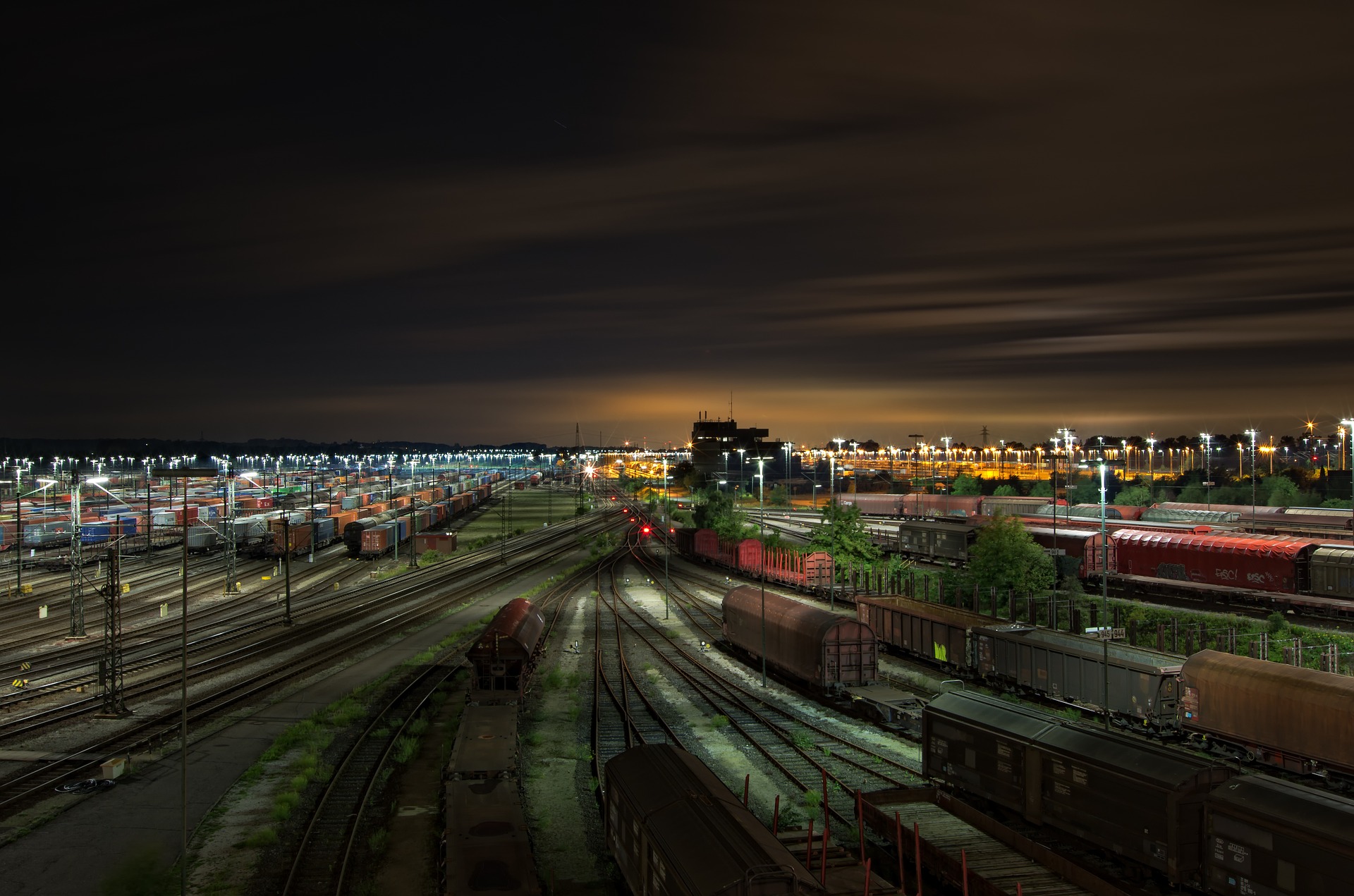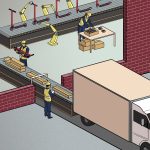What is the physical internet?
 The physical internet is a strange concept. It borrows its name from the best-known computer network, yet it bears little connection with it, other than being an inspiration for bringing together economic stakeholders and causing them to work together. The physical internet is in fact a new way of organizing the logistics network. In light of the urgent climate challenges facing our planet and the economic challenges of companies, we must rethink logistics from a more sustainable perspective. Shenle Pan, a researcher in management science at Mines ParisTech and specialist in logistics and transport, explains this concept and its benefits.
The physical internet is a strange concept. It borrows its name from the best-known computer network, yet it bears little connection with it, other than being an inspiration for bringing together economic stakeholders and causing them to work together. The physical internet is in fact a new way of organizing the logistics network. In light of the urgent climate challenges facing our planet and the economic challenges of companies, we must rethink logistics from a more sustainable perspective. Shenle Pan, a researcher in management science at Mines ParisTech and specialist in logistics and transport, explains this concept and its benefits.
This article is part of our series on “The future of production systems, between customization and sustainable development.”
What does the physical internet refer to?
Shenle Pan: It’s the metaphor of the internet applied to supply chain networks and related services. When we talk about the physical internet, the objective is to interconnect distribution networks, storage centers, suppliers, etc. Today, each contributor to the supply chain system is on their own. Companies are independent and have their own network. The idea of the physical internet is to introduce interoperability between stakeholders. The internet is a good analogy for guiding the ideas and structuring new organizational methods.
What is the benefit of this subject?
SP: Above all, it is a way of making logistics more sustainable. For example, when each stakeholder works on its own, a delivery truck leaves without being full. The delivery must be on time, and the truck leaves even if it is only half full. By connecting stakeholders, a truck can be filled with more goods for another supplier. If enough companies share transport resources, they can even reach a flow of goods significant enough to use rail freight. Since one full truck emits less CO2 than two half-filled trucks, and the train runs on electricity, the environmental impact would be greatly reduced for the same flow of goods. Companies also save due to the scale effect. The benefits are also related to other logistics departments, such as storage, packaging and handling.
How will this impact the logistics markets?
SP: By interconnecting stakeholders, competing companies will be connected. Yet today, these stakeholders do not share their information and logistical means. New rules and protocols must therefore be established to control stakeholders’ access to components in the supply chain, using the networks, transporting goods, etc. This is what protocols do, which in the case of the internet include TCP/IP. New intermediaries must also be introduced on the markets. Some are already beginning to appear. Start-ups offer to mutualize transport to maximize the trucks’ capacity. Others sell storage areas for one pallet for a short period of time to adapt to the demand, whereas stakeholders are generally used to buying entire warehouses they do not always fill. The physical internet therefore leads us toward a new logistics model called Logistics as a Service. This new model is more flexible, efficient, interoperable and sustainable.
What makes the physical internet a field of study?
SP: Real interdisciplinary research is needed to make all these changes. It is not easy, for example, to design standardized means for promoting interoperability. We must determine which mechanisms are the best suited and why. Then, in the area of management science, we must ask which intermediaries should be introduced into the network to manage the openness and the new business models this would involve. From a computer science perspective: how can the services of the various stakeholders be connected? Personally, I am working on the mathematical aspect, modelling new types of organization for the network, for example for assessing gains.
What are the tangible gains of the physical internet in terms of logistics?
SP: We took two major supply chains from mass distribution in France and we integrated the data into our new organizational models to simulate the gains. Depending on the scenarios, we improved the filling of trucks by 65% to 85%. Greenhouse gases decreased 60% for CO2 emissions due to multi-modality. In our simulations, these significant results were directly linked to interoperability and the creation of the network. Our models allow us to determine the strategic locations where shared storage centers should be established for several companies, optimize transport times, reduce supply times and storage volumes… We also had gains of over 20% in stock sizes.
Does the logistics sector already use the principles of the physical internet?
SP: The physical internet is a fairly recent concept. The first scientific publication on the topic dates to 2009, and companies have only been interested in the subject for approximately three years. They are adopting the concept very quickly, but they still need time. This is why we have a research chair on the physical internet at Mines ParisTech, with French and European companies; they submit their questions and use cases to help develop the potential of this concept. They recognize that we need a new form of organization to make logistics more sustainable, but the market has not yet reached a point where the major players are restructuring based on the physical internet model. We are currently seeing start-ups beginning to emerge and offer new intermediary services.
When will we experience the benefits of the physical internet?
SP: In Europe, the physical internet has established a solid roadmap, developed in particular by the ALICE alliance, which connects the most significant logistics platforms on the continent. This alliance regularly issues recommendations that are used by European H2020 research programs. Five focus areas have been proposed for integrating the physical internet principles in European logistics by 2030. This is one of the largest initiatives worldwide. In Europe, we therefore hope to quickly see the physical internet comprehensively redefine logistics and offer its benefits, particularly in terms of environmental impacts.




Leave a Reply
Want to join the discussion?Feel free to contribute!